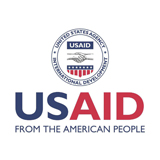
A Child Survival Revolution
All women and all children — no matter where they are born — deserve the same chance to survive and thrive. Over the last 30 years, the global community has responded to the urgency of this mission, raising child and maternal survival to the top of the international development agenda. Just as the Green Revolution transformed agricultural production and prevented widespread famine, the child survival revolution is saving millions of lives and unleashing a virtuous cycle of progress and opportunity.
The Call to Action’s Five Strategic Shifts:
- Increase efforts in the countries that account for the largest share of under-five deaths
- Reach the most underserved populations
- Target priority causes of mortality with innovation efforts and interventions poised to go to scale
- Invest beyond health programs to include empowering women and supporting an enabling environment
- Create transparency and mutual accountability at all levels, with strengthened commitment to common metrics for tracking progress
Working together over the last three decades, we have expanded coverage of voluntary family planning, dramatically improved access to new vaccines, integrated nutrition and hygiene into global health, and launched innovative public-private partnerships to extend our reach. Since 2010, the Helping Babies Breathe partnership has trained and equipped 130,000 health workers in 60 countries to provide life-saving resuscitation for newborns with asphyxia, with results in Tanzania showing a 47% reduction in early newborn mortality. From 1990 to 2012, the world achieved a 72% reduction in the risk of a child dying from pneumonia or diarrhea, thanks in part to the introduction of vaccines against rotavirus and pneumococcus and improvements in treatment — both advances supported by diverse public and private organizations, including USAID. Together with its partners, the President’s Malaria Initiative contributed to the significant reduction n malaria mortality rates in children under five in Africa by an estimated 54% between 2000 and 2012.
All told, from 1990 to 2012, the total number of child deaths fell by 48% from 12.6 million to 6.6 million. In the last 20 years, nearly 100 million child lives have been spared, and the rate at which mortality is declining continues to accelerate. The total number of maternal deaths also decreased globally by 45% from 523,000 in 1990 to 289,000 in 2013.
By the time the Millennium Development Goals (MDGs) were adopted in 2000, the global community had recognized the fundamental connection between health and development, and the momentum surrounding the overall efforts to reduce child and maternal mortality only accelerated. In 2010, UN Secretary-General Ban Ki-moon launched Every Woman Every Child to present a roadmap for enhanced financing strengthened policy, and improved service to address the major health challenges facing vulnerable women and children. As progress has advanced, so too has our definitionof child survival, which has evolved over the last 30 years to include a more integrated picture of health, development, and well-being.
Despite this extraordinary progress, rates of child and maternal death remain unacceptably high. Hundreds of thousands of mothers continue to die during what should be a joyous moment in their lives, and millions of children die from causes we know how to prevent. Today, a woman’s risk of dying from childbirth in sub-Saharan Africa is more than 47 times greater than in the United States.
Download the report now: